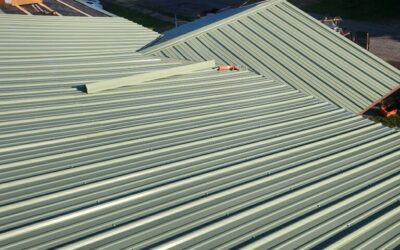Understanding Roof Leaks
Common Causes
Roof leaks can result from various issues, including:
- Damaged Shingles: Cracked, curled, or missing shingles can expose the underlying roof deck to moisture.
- Faulty Flashing: Improperly installed or deteriorated flashing around chimneys, vents, and skylights can allow water intrusion.
- Clogged Gutters: Blocked gutters can cause water to back up and seep under the roofing materials.
- Ice Dams: In colder climates, ice dams can form at the roof’s edge, preventing melting snow from draining and causing leaks .
Signs of a Leak
Detecting a roof leak early can prevent extensive damage. Look out for:
- Water Stains: Discoloration on ceilings or walls.
- Dripping Water: Active leaks during or after rain.
- Mold or Mildew: Growth in areas with persistent moisture.
- Peeling Paint: Moisture can cause paint to bubble or peel.
Immediate Actions to Mitigate Damage
Contain the Leak
Place buckets or containers under active drips to catch water. Use towels to soak up any standing water to prevent floor damage .
Relieve Water Pressure
If you notice a bulge in your ceiling, it may be holding water. Puncture the bulge carefully to release the water and prevent further ceiling damage .
Protect Belongings
Move furniture, electronics, and valuables away from the leak to prevent damage.
Temporary Fixes
Tarping the Roof
Covering the affected area with a tarp can provide a temporary barrier against water intrusion. Secure the tarp with nails or weights to prevent it from blowing away.
Applying Roof Sealant
Use a roof sealant or waterproof cement to patch small holes or cracks. Products like LEAK STOPPER Fibered Waterproof Cement can offer immediate relief .(lowes.com)
Flashing Repairs
If the leak is near flashing, applying roof sealant to the area can temporarily stop the leak. Ensure the sealant is applied smoothly to prevent water diversion .
Permanent Solutions
Replacing Damaged Shingles
Remove the damaged shingles and replace them with new ones. Ensure proper alignment and sealing to prevent future leaks.
Fixing Flashing
For long-term repair, replace damaged flashing by removing surrounding shingles, installing new flashing, and reapplying shingles .(thisoldhouse.com)
Sealing Nail Holes
Small holes from nails can be sealed by placing flashing underneath the compromised shingle and applying roofing cement to the edges .(thisoldhouse.com)
Preventative Measures
Regular Inspections
Inspect your roof at least twice a year and after major storms. Pay attention to areas around chimneys, vents, and skylights
Gutter Maintenance
Keep gutters clean to ensure proper water drainage. Clogged gutters can cause water to back up and seep under the roof.
Attic Ventilation
Proper ventilation prevents moisture buildup in the attic, reducing the risk of mold and rot .
Ice Dam Prevention
In colder regions, ensure your attic is well-insulated to prevent heat from melting snow on the roof, which can refreeze at the eaves and form ice dams .
When to Call a Professional
While minor repairs can be DIY projects, certain situations require professional intervention:
- Persistent Leaks: If the leak continues despite temporary fixes.
- Structural Damage: Sagging ceilings or significant water damage.
- Safety Concerns: If accessing the roof is dangerous due to height or weather conditions.
Professionals can provide a thorough inspection, identify underlying issues, and offer warranties on their work.
Cost Considerations
The cost of repairing a roof leak varies based on the extent of damage and the required repairs. Minor repairs may cost around $250, while more extensive repairs can range from $400 to $2,500 . It’s essential to address leaks promptly to avoid more costly damage in the future.
Conclusion
Stopping a roof leak involves immediate action to mitigate damage, temporary fixes to prevent further water intrusion, and permanent repairs to resolve the underlying issue. Regular maintenance and inspections are key to preventing leaks. When in doubt, consult a professional to ensure the safety and integrity of your home.
For a visual guide on patching a roof leak, check out the following video:
 (440) 307-2060
(440) 307-2060

